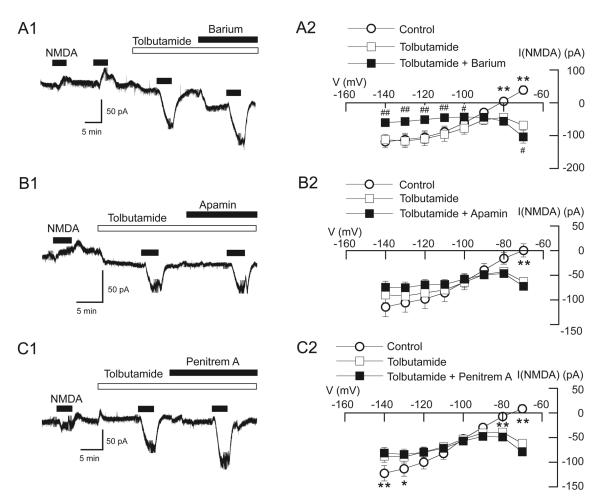Fig. 5.
Augmentation of NMDA-induced currents by AMPK is sulfonylurea-sensitive. NMDA-induced outward currents were recorded with pipettes that contained A697662 (5 μM). (A1) Current trace shows that outward current evoked by NMDA (at −70 mV) was blocked by tolbutamide (100 μM). Note that the addition of Ba2+ (300 μM) increased the amplitude of NMDA-evoked inward current. (A2) Summarized I-V plots show that tolbutamide significantly altered the voltage dependence of NMDA-evoked currents in the presence of A769662, and the addition of Ba2+ caused a further shift in voltage dependence (n = 8). Also note that tolbutamide changed the slope conductance of NMDA-evoked currents from positive to negative, and this was further accentuated by Ba2+. (B1) NMDA-induced inward currents in tolbutamide were not further increased by apamin (1 μM). (B2) I-V plots show that the voltage dependence of NMDA currents in tolbutamide (100 μM) was not altered by the addition of apamin (n = 6). (C1) NMDA currents recorded in tolbutamide and penitrem A (10 μM). (C2) Summarized I-V plots show that the region of negative slope conductance of NMDA-gated currents in tolbutamide was not significantly altered by the addition of penitrem A (n = 12). Symbols near data points indicate significant differences (* and #, P < 0.05; ** and ##, P < 0.01; * and **, control vs tolbutamide; # and ##, tolbutamide vs tolbutamide plus Ba2+).

